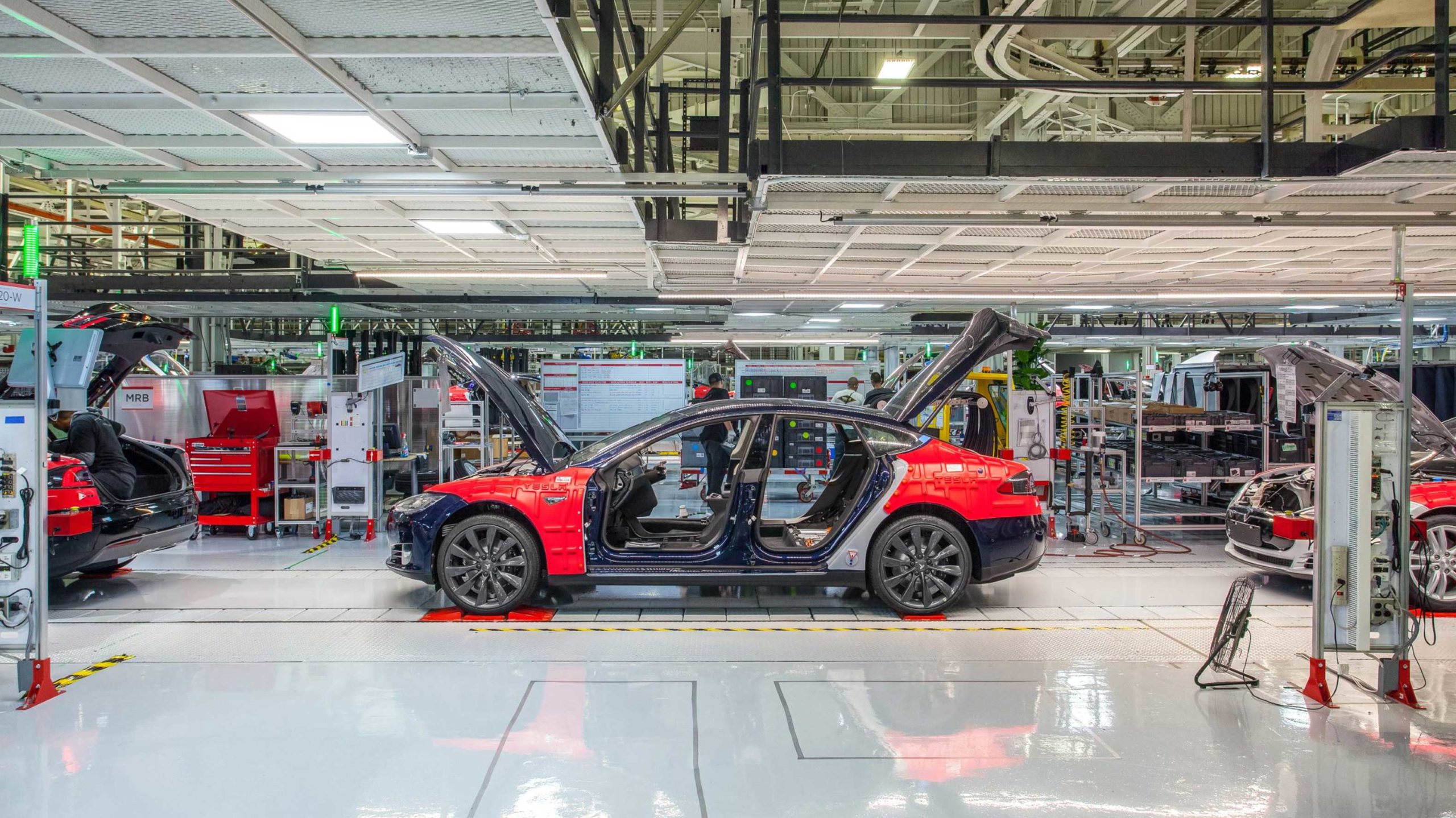
Through feats of creative engineering, Tesla has been able to halve the cost of batteries and make them more efficient.
A new design
This new battery uses a new tiled spiral design that allows the company to make larger battery cells that can still fast-charge. Tesla CEO Elon Musk said that this new battery improvement can result in an average EV range increase of 16 percent and storage of five times as much energy.
Removing a step
The next step in Tesla’s new battery uses a dry process of adding electrodes to a foil that uses a lot less manufacturing and time. That said, Musk mentioned that the company is still working to scale up this process, so it’s not quite ready for mass production yet.
Average battery production uses huge factories to do a wet version of this process. Tesla’s process should remove this step and, thus, remove the need for these factories.
The company hopes to start using this new process in a year to 18-months, according to Musk. For now, the company needs to focus on scaling up the battery production and ironing out any production wrinkles.
Assembly
After the company talked about removing the wet electrode process, it mentioned how it’s been tackling the assembly line problems facing battery production.
One goal is to create a faster and denser factory that can replace what four or five factories might currently do. Musk says one of Tesla’s new goals is to become the best at manufacturing in the world.
Verifying quality
Through a step called formation, Tesla tests each battery and charges it. The new process should use a lot less space and take less time.
A new silicon
Silicon starts as metal, so Tesla decided to use raw silicon that gets stabilized dryly with an ion coating. This is then added to the batteries to make them cheaper, and Tesla says that also helps extend the range.
Battery Cathodes
Cathodes are small sections that sit in batteries to separate the ions within the battery. Many batteries use cobalt or cobalt mixed with nickel. Tesla is working to move away from cobalt to just nickel since it’s cheaper and can work just as well.
There are even different nickels that Tesla can use to activate diverse range and stability ratings depending on what vehicle. For instance, the Tesla Semi and vehicles will use high-nickel, so they get the most range.
Other items like powerwall can use less than 100 percent nickel since it’s not under as much stress as a car. This should also make some batteries cheaper.
Tesla is also looking to mine and develop metal with a much more scalable solution that should take less time to refine as well. This is also greener since its smaller and easier to reuse the wastewater.
A new lithium extraction process
Tesla has found a new way to use salt to extract lithium. The company said that all they do is mix clay with salt and water, and the lithium will combine with the salt so Tesla can then use it for battery production.
This and everything else is going to be done in one factory. Musk said that raw materials would go in, and batteries will come out.
Adding the batteries to Tesla cars
Tesla uses a giant casting machine and a new alloy of metal that can be formed into giant car pieces.
These two pieces are then attached to a new structural battery pack. Since the batteries are larger now, they can be used as part of the frame. The new filler that goes into the battery pack is a flame retardant glue that’s super stiff, creating a super-rigid frame piece.
Musk says that a convertible car made with this new bottom design would be stiffer than a regular gasoline-powered car.
This is also a 10 percent mass reduction in the body of the car and a massive simplification in the factory.
What does this mean today?
This brings the cost of this battery 56 percent cheaper for Tesla than using a competitor’s battery unit.
The company is also saying that the cell is going to have a 54 percent increase in range. That said, the new batteries are much larger than traditional batteries, so the company may use fewer in each car. This means that while each battery might have more range, they may not result in substantial range increases for the company’s cars.
The company isn’t going to stop using its supplier’s batteries right away. The company only plans to make 100-gigawatt hours by 2022, so it still needs manufacturing help.
By 2030 or even earlier, the company hopes to produce three-terawatt hours of batteries.
Tesla hopes to start seeing the gains from this new method in a year to 18 months and it thinks that in three years, it can make a $25,000 USD (roughly, $33,000 CAD) car.
Source: Tesla
MobileSyrup may earn a commission from purchases made via our links, which helps fund the journalism we provide free on our website. These links do not influence our editorial content. Support us here.


